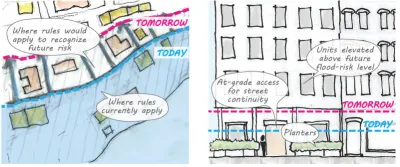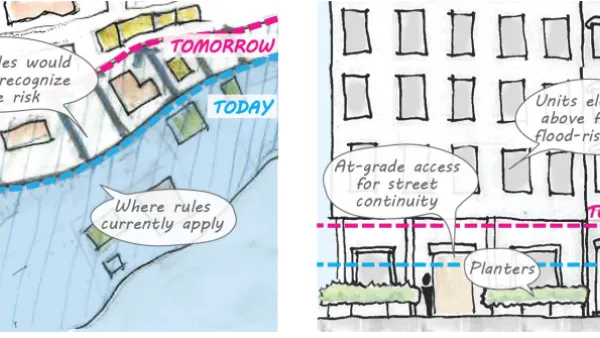With 520 miles of coastline, New York City is ready to implement the lessons of Hurricane Sandy in the zoning code for the entire city.

New York Department of City Planning is seeking public input on a citywide rezoning designed to improve resilience during flood events. The new zoning rules are proposed in the Zoning for Coastal Flood Resiliency (ZCFR) process, according to a press release from the Department of City Planning.
According to the ZCFR website, "Zoning for Coastal Flood Resiliency would improve homeowners’ and business owners’ ability to withstand and recover from future storms and other disaster events. It builds on years of collaboration with floodplain communities to support post-disaster recovery and promote long-term resiliency."
The zoning changes proposed by the ZCFR process would update temporary zoning changes implemented after Hurricane Sandy in 2012, according to the same web page.
"The proposal would allow homeowners, business owners, architects and others to design resilient buildings that are better protected from flood risk and reduce flood insurance costs. It would protect and support public access to waterfront sites through resilient open space design. It would also help New Yorkers recover quickly from other future disasters, including the COVID-19 crisis," according to the website.
New York City Planning Commission Chair Marisa Lago is quoted in the press release with the following soundbite: "This new zoning also provides needed flexibility to address all types of future disasters, whether another climate event or today’s COVID-19 pandemic."
"Currently, buildings are restricted by zoning regulations that do not take resiliency into account and thus force New Yorkers to choose between interior space and resiliency improvements. ZCFR will make it easier for buildings to meet or exceed modern resiliency codes without sacrificing their basement, for example, by adding some much-needed zoning flexibility," reads the press release.
In one crucial component of the rezoning, the changes would limit the construction of new nursing homes in areas of high flood risk.
FULL STORY: Making NYC More Resilient: Public Review Begins for DCP’s Important Zoning for Coastal Flood Resiliency

National Parks Layoffs Will Cause Communities to Lose Billions
Thousands of essential park workers were laid off this week, just before the busy spring break season.

Retro-silient?: America’s First “Eco-burb,” The Woodlands Turns 50
A master-planned community north of Houston offers lessons on green infrastructure and resilient design, but falls short of its founder’s lofty affordability and walkability goals.

Delivering for America Plan Will Downgrade Mail Service in at Least 49.5 Percent of Zip Codes
Republican and Democrat lawmakers criticize the plan for its disproportionate negative impact on rural communities.

Test News Post 1
This is a summary

Test News Headline 46
Test for the image on the front page.

Balancing Bombs and Butterflies: How the National Guard Protects a Rare Species
The National Guard at Fort Indiantown Gap uses GIS technology and land management strategies to balance military training with conservation efforts, ensuring the survival of the rare eastern regal fritillary butterfly.
Urban Design for Planners 1: Software Tools
This six-course series explores essential urban design concepts using open source software and equips planners with the tools they need to participate fully in the urban design process.
Planning for Universal Design
Learn the tools for implementing Universal Design in planning regulations.
EMC Planning Group, Inc.
Planetizen
Planetizen
Mpact (formerly Rail~Volution)
Great Falls Development Authority, Inc.
HUDs Office of Policy Development and Research
NYU Wagner Graduate School of Public Service





























